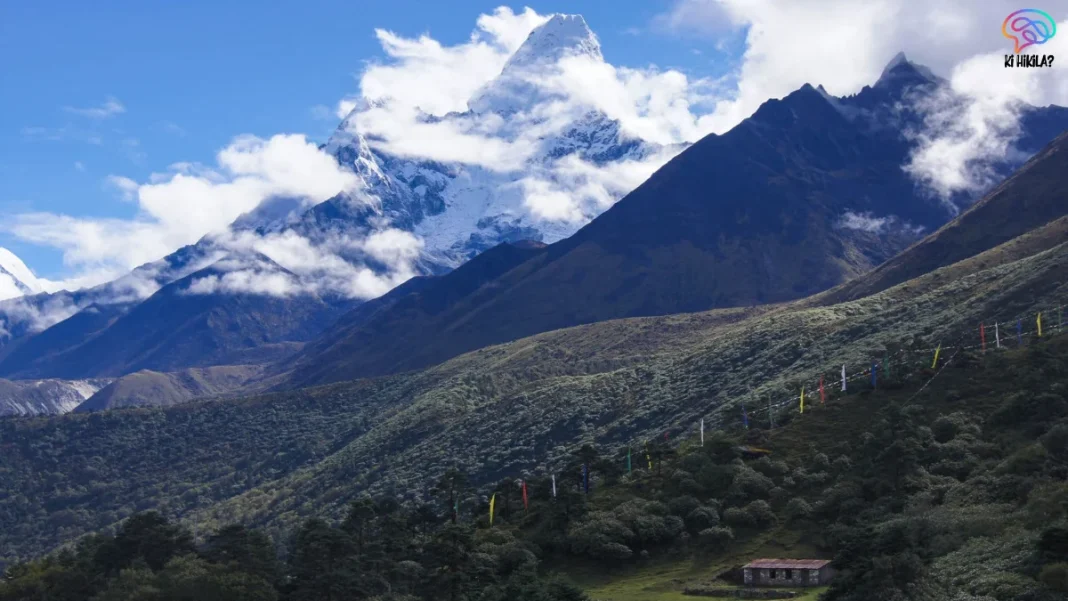Himalayan Climate Risks 2025 are emerging as one of the most pressing challenges for India and its neighboring countries. The Indian Himalayan region is increasingly vulnerable to frequent and severe climatic and geological disasters. Once considered rare, events like glacial lake outbursts, flash floods, avalanches, cloudbursts, and landslides have now become common occurrences, destabilizing mountain ecosystems and threatening human lives and infrastructure. From Ladakh to Arunachal Pradesh, and extending into Nepal, Bhutan, and Sikkim, the escalating risks pose grave implications not just for local communities but also for national security and regional cooperation.
Recent Climatic and Geological Events
The past few years highlight how severe Himalayan Climate Risks 2025 have become. In February 2021, Uttarakhand’s Chamoli disaster demonstrated the devastating impact of a glacier fragment collapse, which triggered massive floods and destroyed a hydroelectric project. In October 2023, the bursting of the South Lhonark lake in Sikkim damaged the Chungthang dam, cutting off critical supplies. By August 2025, flash floods near Harsil in Uttarakhand disrupted major transit routes, leaving local communities isolated and affecting strategic movement near border areas.
These incidents often trigger chain reactions—floods followed by landslides, or avalanches set off by heavy rainfall—leading to compounding destruction. Such patterns underline the fragility of the Himalayas and confirm that disasters are no longer isolated events but part of a broader trend of destabilization.
Geographical and Political Vulnerabilities

The Himalayas’ diverse geography makes Himalayan Climate Risks 2025 especially complex. Ladakh faces rapid glacier retreat and thawing permafrost, destabilizing settlements and military bases. Jammu and Kashmir grapple with recurring landslides that block highways essential for trade and defense. Himachal Pradesh and Uttarakhand are caught between booming tourism and increasingly erratic weather.
Cross-border regions also face heightened risks. Nepal and Sikkim remain exposed to glacial floods that spill across boundaries. Bhutan and Arunachal Pradesh are vulnerable to sudden river floods worsened by inadequate early-warning systems and weak regional coordination. These overlapping vulnerabilities demonstrate the need for a coordinated regional response to shared risks.
Development Challenges and Risks
Infrastructure development is one of the biggest contributors to Himalayan Climate Risks 2025. Roads, tunnels, and dams are often constructed without accounting for the seismic and fragile geology of the Himalayas. The mountains are young and tectonically active, meaning that large-scale construction can easily destabilize slopes.
The consequences extend beyond local communities. For the armed forces, floods and landslides can cut off crucial supply lines, isolate border posts, and threaten national defense strategies. Infrastructure resilience is therefore not just an environmental issue but also a matter of national security.
Policy Shifts Toward Disaster Resilience
Recognizing these risks, India’s 15th Finance Commission (2021–26) introduced climate resilience into fiscal planning. A Mitigation Fund under State Disaster Risk Management Funds now allocates ₹1.6 lakh crore for preventive measures, including hazard mapping, early warning systems, and climate-proof infrastructure.
States like Sikkim and Uttarakhand have begun using these funds to strengthen local disaster preparedness. Looking ahead, the 16th Finance Commission (2026–31) is expected to tie fiscal transfers to climate resilience outcomes, encouraging states to prioritize long-term safety investments. These policy shifts mark an important step in tackling Himalayan Climate Risks 2025 proactively.
Local Governance and Innovation
Local governance plays a vital role in managing disasters in remote Himalayan regions. Proposals are underway to allow village councils and municipal bodies direct access to mitigation funds, enabling faster and more tailored responses.
Innovative solutions are also being considered, such as incentives for green infrastructure, climate-based insurance schemes, and climate-responsive budgeting. By empowering frontline communities, these initiatives aim to ensure that risks from glaciers, seismic activity, and floods are managed effectively.
Global Recognition and Cooperation
On the global stage, India’s G-20 presidency in 2023 helped bring disaster risk resilience into international discussions. Global recognition of Himalayan Climate Risks 2025 has encouraged new collaborations, including multilateral financing, cross-border insurance pools, and shared early-warning systems.
Given that rivers, glaciers, and hazard zones often cross political boundaries, India, Nepal, Bhutan, and other Himalayan states are increasingly exploring joint drills, data sharing, and integrated management systems. These measures are essential for minimizing damage and ensuring quick recovery after disasters.
Balancing Development, Security, and Ecology

The greatest challenge in addressing Himalayan Climate Risks 2025 lies in balancing development, ecological protection, and security. Sustainable development practices, such as promoting eco-tourism, decentralized renewable energy, and community-based conservation, can help reduce vulnerabilities.
At the same time, every infrastructure project in the Himalayas must undergo rigorous risk assessments and adaptation planning. Protecting the region safeguards not just local livelihoods but also vital water resources, biodiversity, and national security interests.
Conclusion
Himalayan Climate Risks 2025 serve as a reminder that the fragile mountains cannot be subjected to unchecked exploitation. With frequent disasters disrupting lives, infrastructure, and security, the Himalayas demand urgent attention. Strengthening disaster resilience, empowering local governance, and fostering regional cooperation are crucial steps toward securing a stable future for the region. Sustainable planning today will decide whether the Himalayas remain a source of life and strength—or a zone of repeated tragedy.



